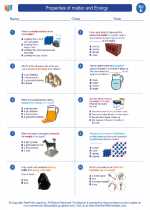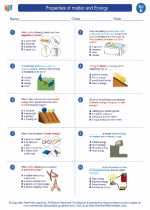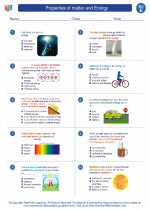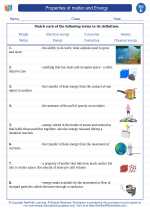Properties of matter and Energy -> frequency
Frequency
Frequency is a measure of how often a specific event occurs in a given time period. It is commonly used in the context of waves, vibrations, and oscillations. In science, frequency is often measured in hertz (Hz), which represents the number of cycles (or occurrences) per second.
Key concepts:
- Wave Frequency: In the context of waves, frequency refers to the number of complete wave cycles that pass a given point in a specific amount of time. For example, in sound waves, frequency determines the pitch of the sound. Higher frequency waves have a higher pitch, while lower frequency waves have a lower pitch.
- Vibrations and Oscillations: Frequency is also used to describe the rate at which an object vibrates or oscillates. For example, the frequency of a pendulum is the number of back-and-forth swings it makes in a given time period.
- Electromagnetic Spectrum: In the context of electromagnetic waves, frequency determines the type of radiation. Different types of electromagnetic waves, such as radio waves, microwaves, visible light, ultraviolet light, X-rays, and gamma rays, have different frequencies that correspond to their position on the electromagnetic spectrum.
Study Guide:
Here are some key points to remember about frequency:
- Frequency is a measure of how often a specific event occurs in a given time period.
- In the context of waves, frequency is the number of complete wave cycles that pass a given point in a specific amount of time.
- The unit of frequency is hertz (Hz), where 1 Hz equals 1 cycle per second.
- Frequency is related to the pitch of sound waves and the properties of electromagnetic waves.
- Higher frequency waves have a higher pitch in the case of sound waves, and different frequencies correspond to different types of electromagnetic radiation.
Understanding frequency is essential for comprehending various phenomena in the natural world, from the behavior of waves to the properties of different forms of radiation.
[Frequency] Related Worksheets and Study Guides:
.◂Science Worksheets and Study Guides Fifth Grade. Properties of matter and Energy
Study Guide Properties of matter and Energy
Properties of matter and Energy  Worksheet/Answer key
Worksheet/Answer key Properties of matter and Energy
Properties of matter and Energy  Worksheet/Answer key
Worksheet/Answer key Properties of matter and Energy
Properties of matter and Energy  Worksheet/Answer key
Worksheet/Answer key Properties of matter and Energy
Properties of matter and Energy  Vocabulary/Answer key
Vocabulary/Answer key Properties of matter and Energy
Properties of matter and Energy  Vocabulary/Answer key
Vocabulary/Answer key Properties of matter and Energy
Properties of matter and Energy 

 Worksheet/Answer key
Worksheet/Answer key
 Worksheet/Answer key
Worksheet/Answer key
 Worksheet/Answer key
Worksheet/Answer key
 Vocabulary/Answer key
Vocabulary/Answer key
 Vocabulary/Answer key
Vocabulary/Answer key

The resources above cover the following skills:
PHYSICAL SCIENCE (NGSS)
Matter and Its Interactions
Students who demonstrate understanding can:
Develop a model to describe that matter is made of particles too small to be seen.